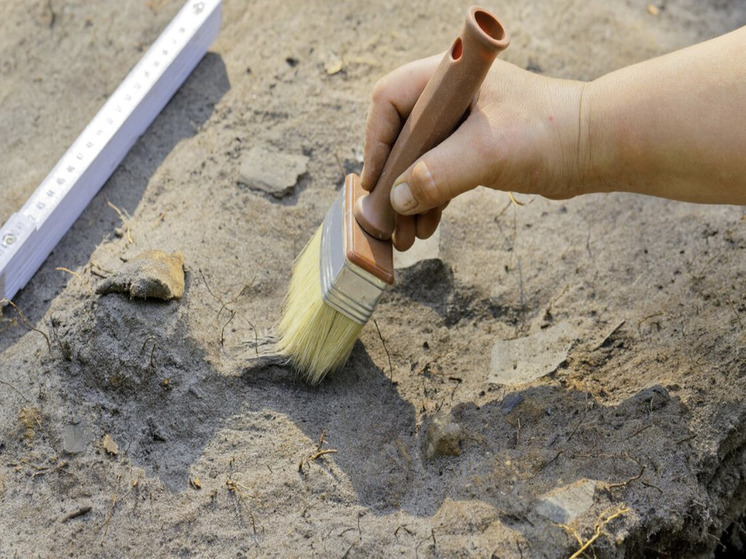Unpretentious jewelry may answer questions about trade of the past
British archaeologists spoke about an unusual discovery. Since the completion of excavations at the Lincolnshire cemetery in 2019, the laboratory has continued to study 49 graves and their contents, providing fascinating insight into the lives of those buried at the site. Archaeologists Katie Hemer and Hugh Wilmott revealed the results of their work on one of the most exotic materials found — ivory.

It was a surprise for researchers to find funeral decorations made of bone in graves in England. This is because metalwork usually attracts the most attention, given the Anglo-Saxons' skill in this area. However, other materials were also highly prized and had to travel long distances before reaching England.
The ivory ring found was believed to have been used as part of a frame supporting the neck of an Anglo-Saxon bag. It is noted that this type of decoration is typically found in about 1-5 percent of female burials from this period, but approximately 20 percent of the female burials in Scramby Cemetery contained it.
Ivory was first discovered in cemeteries by 19th-century antiquarians, and then it was always in the form of simple rings. It is generally accepted that they were used to form a «keychain» from which the bag could be hung. That is why they are often found on the thigh of a skeleton.
“At first glance, the rings are quite plain — they are simple and undecorated, made from simple transverse cuts on a large tusk — so it is likely not their complex shape, but the precious material that made them so valuable to their owners,” the archaeologists say.
The origin of ivory has become a matter of debate among scientists. In the last century there was much speculation that the source of the tusks could have been ancient mammoths. However, more recently, radiocarbon dating of the rings from Scramby has shown that they were contemporary with the burials in which they were found. Given the size of the tusks required to make the bag ring, that leaves only one candidate: the elephant.
“We wondered where this ivory might have come from and what it tells us about wider trade networks in the early Anglo-Saxon period. There were two species in the frame — African and Asian elephants, but it is almost impossible to visually distinguish their tusks, especially when they are processed into objects. The Romans are known to have used ivory from both Asian and African sources, with Egypt acting as a distribution point for the entire empire. However, some scholars have suggested that with the collapse of the Western Empire, the trade routes that brought African ivory to the north ceased to function. So where did the material come from in England? Using cutting-edge scientific methods, we sought to find out,” says researcher Katie Hemer.
Peptide mass fingerprinting analysis to identify the animal species showed that the ivory from Scramby came from an African elephant.
Hugh Wilmott adds that they used strontium isotope analysis, which tells when the tusks formed from food.
The evidence therefore suggests that the rings from the cemetery in England were made made of ivory, possibly quarried in Ethiopia or Kenya in the 5th or 6th century AD. The proposed research results will help to gain a better understanding of trade mechanisms and connections between West and East during the early Middle Ages.
























































Свежие комментарии